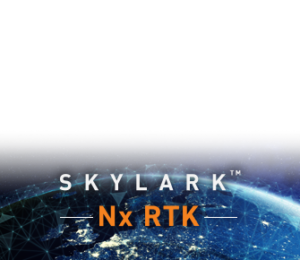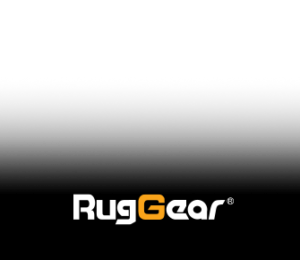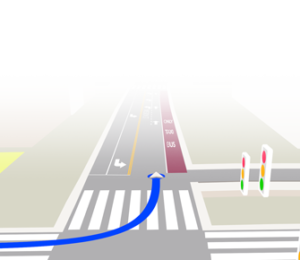The robotic lawn mower (RLM) market is experiencing rapid innovation, driven by demand for greater autonomy and precision. Achieving consistent, centimeter-level accuracy in dynamic outdoor environments is paramount for next-generation RLM systems. To explore the evolving landscape of RLM navigation and the role of high-precision GNSS, I sat down with Alberto Bushell, Robotics Market Specialist at Swift Navigation. With an engineering degree in geomatics and over 15 years in the GNSS industry, spanning both technical and commercial roles, Alberto brings unparalleled expertise in delivering advanced positioning solutions for the autonomous robotics sector.
In this Q&A, he shares insights on how Swift Navigation’s Skylark™ Nx RTK is uniquely suited to meet the performance, scalability, and integration needs of today’s RLM manufacturers.
EP: How is the robotic lawn mower market evolving, and what trends should manufacturers be watching?
AB: The robotic lawn mower market is transitioning to precise, virtual geofencing and moving away from two legacy approaches to autonomy. The first involves buried perimeter wires to define the mower’s boundary, which is an invasive and inflexible method that limits robotic movement and prevents structured, pattern-based mowing. The second relies on precise GNSS positioning delivered via a local RTK base station which is intalled on-property, or nearby. While accurate, this setup is costly and cumbersome to deploy.
Today, the industry is rapidly shifting toward cloud-based RTK correction services. Enabled by advances in GNSS module technology and hardware-agnostic solutions like Skylark Nx RTK, this new generation of positioning removes the need for physical base stations. As a result, robotic lawn mower systems become more scalable, user-friendly, and deliver a significantly improved customer experience.
Another trend manufacturers should be watching is the influx of international manufacturers, especially from China, offering low-cost hardware. This trend is common in emerging technologies, electric vehicles for example, where affordable Chinese brands are rapidly gaining international market share. To compete, other manufacturers must be more agile, building systems that adapt easily to new technologies. A key response is modularity. RLM developers increasingly want future-proof solutions, allowing them to swap GNSS receivers, modems, or software without redesigning the entire positioning stack. This flexibility is vital for cost control and keeping pace with the evolving hardware and connectivity ecosystem. By focusing on interoperable, hardware-agnostic solutions, manufacturers can better manage costs, accelerate development, and respond quickly to shifts in the competitive landscape.
EP: What are the top priorities you hear from RLM manufacturers when it comes to navigation and positioning?
AB: RLM manufacturers, from established brands to agile startups, relentlessly pursue accuracy, reliability and an exceptional user experience. These are advanced autonomous robots in dynamic outdoor settings, and end-users expect an “Apple-like experience”: a device that works seamlessly and reliably out of the box, with minimal intervention. This means the RLM must always know its exact position for a perfect cut, obstacle avoidance, and flawless return to base. Any drop in correction availability or accuracy leads directly to user frustration. Swift addresses this by offering enterprise-grade SLAs, meeting the rising need among RLM manufacturers for guaranteed availability and accuracy.
EP: Robotic lawn mowers operate in complex, real-world environments. What are the primary technical challenges for achieving reliable, centimeter-level positioning in these settings?
AB: The real world is far messier than a controlled test lab. Once you take a robotic lawn mower out into a suburban yard or a complex landscaping environment, you’re dealing with constant variables that affect GNSS performance. Signal obstruction and multipath are practically guaranteed, where tree canopies, buildings, and even tall fences can block or reflect satellite signals and lead to position errors. That’s why a reliable correction service has to maintain accuracy even when satellite visibility is partial or compromised. Services which support triple-band, or even or even quad-band corrections, such as Skylark Nx RTK, address this by improving multipath resilience through increasing the number of available satellite signals.
From a system design perspective, achieving consistent performance in these environments requires careful alignment of hardware capabilities, like multi-frequency GNSS receivers, with correction services that can scale and adapt. Not all combinations perform equally across real-world settings, so interoperability, signal diversity, and regional service coverage should all factor into the evaluation process.
EP: Beyond the technical aspects, what strategic features of a GNSS correction service should RLM manufacturers evaluate?
AB: When choosing a GNSS correction service, manufacturers must strategically evaluate the core solution features to ensure long-term viability and competitive advantage.
One of the first things to evaluate is the network architecture. Manufacturers should look for a system that delivers wide-area, consistent coverage without relying on dense clusters of local base stations, which can create coverage gaps and performance variability. The most robust services use advanced atmospheric modeling to deliver uniform corrections across large geographies, ensuring consistent performance no matter the location. But architecture isn’t just about coverage, it’s also about resilience. When issues like station outages or signal anomalies occur, the ability to detect and respond quickly is critical. That’s why Swift has partnered with global mobile network operators to deploy and manage infrastructure at scale, ensuring both high uptime and rapid support.
Scalability and cost efficiency are equally important. A correction service must grow with your business, from small-scale pilots to full global production, without costs ballooning. The most competitive providers leverage economies of scale in their network operations and pass those cost efficiencies on to manufacturers. Flexibility also plays a key role in reducing operational expenses. Manufacturers need freedom to choose the GNSS hardware that best fits their design and supply chain requirements, while keeping integration as frictionless as possible. A hardware-agnostic service that supports standard data formats reduces development time and complexity, while keeping the door open to future upgrades.
EP: Given that there are many GNSS correction service providers out there, how important are partnership and support models in the selection process?
AB: Very important! Choosing a GNSS correction service provider is much more than procuring a component, it’s a long-term strategic partnership. Some providers simply sell a service; others are truly invested in your success. Proactive technical support, ongoing performance validation, and adaptability to your roadmap are all signs of a strong partner.
At Swift, we bring to the RLM space the same commitment we’ve shown in the automotive industry – where we have a proven track record of enabling mass-market, safety-critical deployments over many years. Our team works closely with manufacturers through integration, validation, and scaling, ensuring that RLM makers are supported not only during development, but across the full product lifecycle. This demonstrates our capacity to support large-scale deployments far into the future.
EP: For robotics manufacturers early in their journey, any tips to avoid common pitfalls?
AB: My primary advice for manufacturers at the start of their journey is to plan for scale early. It’s one thing to get a prototype working in your test field. It’s another to ship tens of thousands of units across multiple countries. Think about provisioning, firmware updates, diagnostics, and support infrastructure from the beginning. Also, test under real-world conditions, not just in ideal setups. GNSS issues don’t always show up in lab environments.
Finally, lean on partners. Whether it’s your chipset vendor or your correction service provider, find teams that are responsive and experienced. This space is evolving quickly, and the right support can save months of development time. It’s important for small and large manufacturers alike to choose a provider that can enable them to scale up in the future, rather than opting for competitors who may lack the infrastructure and experience required for large-scale, long-term success.
Already deploying autonomous robotics systems, or planning to? Alberto is available at [email protected] to discuss scalable GNSS solutions and provide tailored advice.
Alberto’s insights underscore the critical role of robust, scalable, and user-friendly high-precision GNSS in the rapidly advancing robotic lawn mower market. By choosing the right technology and strategic partners, manufacturers can overcome complex positioning challenges and deliver next-generation autonomous systems at scale. Learn more about Swift Navigation’s Skylark™ Nx RTK and how it can power your RLM deployments.









